The celebrated Mr. K has an ace of a column up his sleeve…
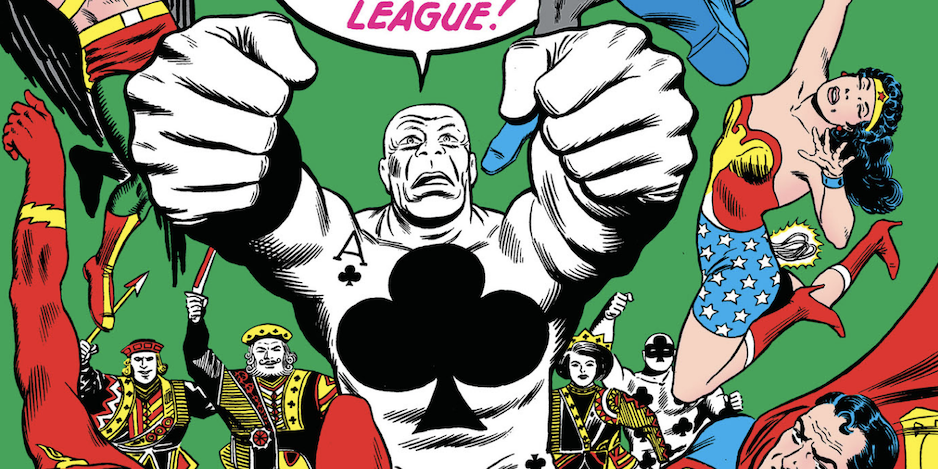
—
UPDATED 9/12/25: Time to dig into the cavernous 13th Dimension vaults! Every once in a while I reprint a piece just for the fun of it. This one’s from September 2022. Dig it! — Dan
—
I don’t usually introduce Paul’s columns because the dude needs no introduction. But here’s some back story: I love the Royal Flush Gang. Love them. But I hadn’t read their original stories in forever, so on one recent night I was sitting up reading Justice League of America #43 and was blown halfway off the couch by it’s wonderfully entertaining, unapologetic Silver Age-ness. So I says to myself, I says, “Jeez, I bet Paul would have a field day with this one.” And here we are!
Dig it.
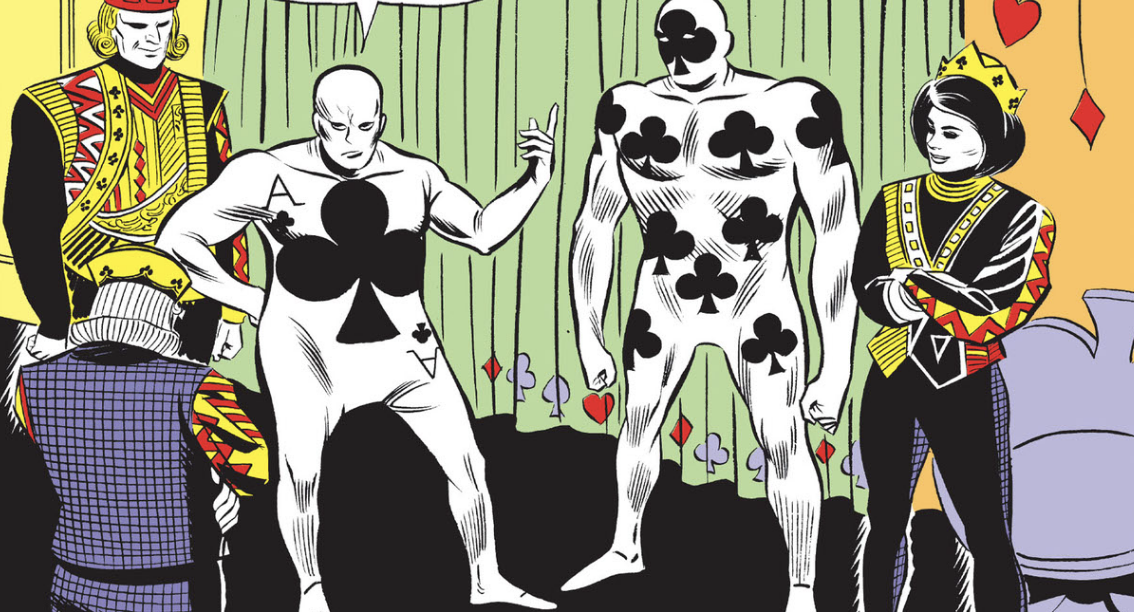
By PAUL KUPPERBERG
This is going to sound nuts to today’s readers, but “The Card Crimes of the Royal Flush Gang!” in Justice League of America #43 (March 1966) wasn’t meant to be goofy. In fact, it’s not, on the face of it, really that much different than any other Julie Schwartz edited title of the period. He liked his writers to outdo themselves on schtick, especially on his covers. The wackier, more intriguing the image, the better. The Flash turning into a puppet or growing super-fat as he ran. Green Lantern versus a giant lizard or selling power rings on the street for a buck. The Atom fleeing Chronos’ buzzsaw or flattened by a madman with a steaming clothes iron. You get the idea.
What makes the goofy “The Card Crimes of the Royal Flush Gang!” so irresistibly strange?
I think because of its sincerity.
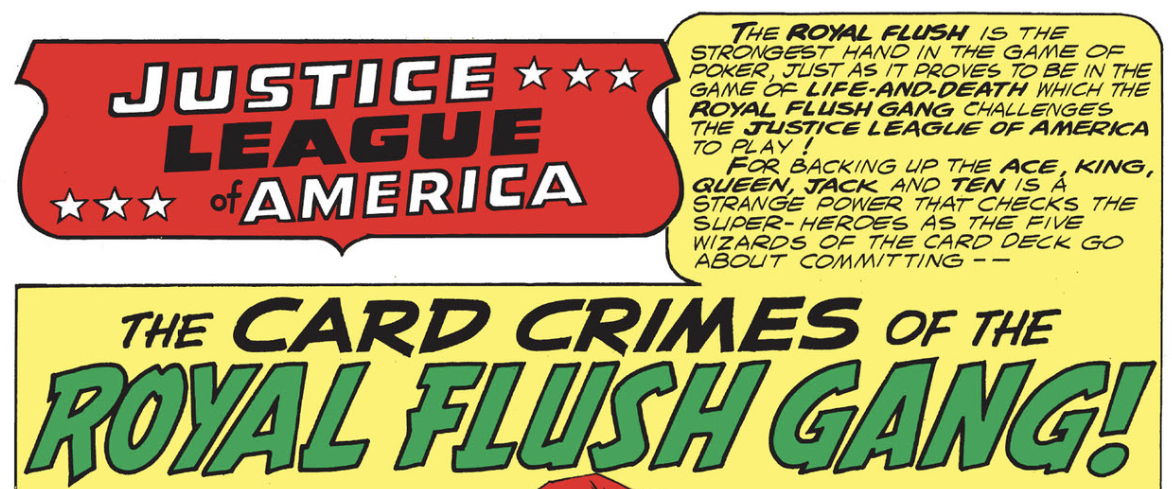
Neither Julie nor writer Gardner Fox approached this issue intending to mess with their readers. They were just trying to plot the next issue of the JLA. Of which, give or take a couple of 80-Page Giant Annuals and counting the trio of The Brave and the Bold issues they were introduced in, there had already been four dozen. And every issue can’t be a universe- or dimensional-spanning epic in which the fate of the world and/or existence is decided. Usually, the League fought more down-to-earth menaces, which made the epics special when they did appear.
So, sometimes, they fought bad guys dressed, y’know, like a deck of playing cards.
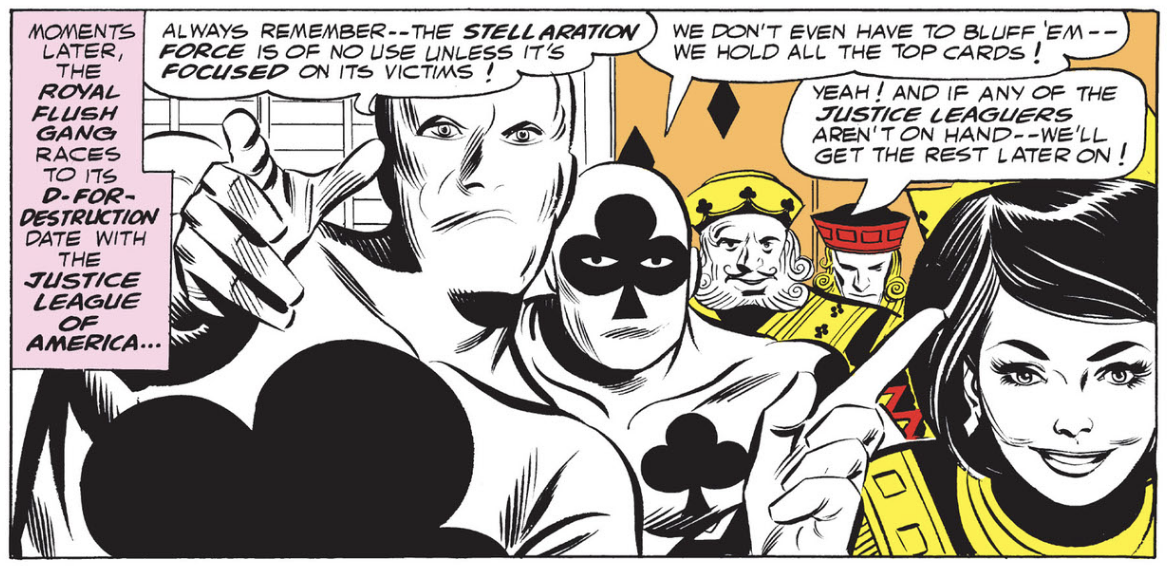
But while I may well now mock, when I first read “The Card Crimes of the Royal Flush Gang!” not long after it was originally published, I didn’t blink an eye. It wasn’t a great issue of JLA, but it wasn’t especially terrible either. But it was 1967 and I was 12.
It is now 2022 and I am 67. Comics have grown somewhat more sophisticated and my perspective and critical abilities have matured, and while I recognize the inherent goofiness of its vintage, I still love the Justice League of America, Julie Schwartz, Gardner Fox, Mike Sekowsky, Bernard Sachs, and Murphy Anderson.
Here then, My 13 Favorite Things About JUSTICE LEAGUE OF AMERICA #43:
—
The cover. With no internet to let readers know what was coming three months before it got there, there was only one tool available to publishers to make their comics stand out on the newsstand from all the others: the cover. That was their one chance to reach their readers, to create an image so bold the average 8- to 13-year-old newsstand or spinner rack browser couldn’t resist picking it up to see what it was all about. This Sekowsky/Anderson image is a beaut, a poster shot that would make any kid go “Huh?!”

—
Page 1. Snapper Carr was supposed to be a relatable youth image for the JLA. Sort of a one-size-fits-all, Robin-like mascot… OK, I don’t know what the hell Snapper was supposed to be, Daddios! Even as a kid I thought he was a pest. Many years later I would refer to kid sidekicks as “punning trip hazards for the superheroes,” a statement I stand by. On the other hand, Snapper in a jester’s/”Joker’s” costume? Tell me more!
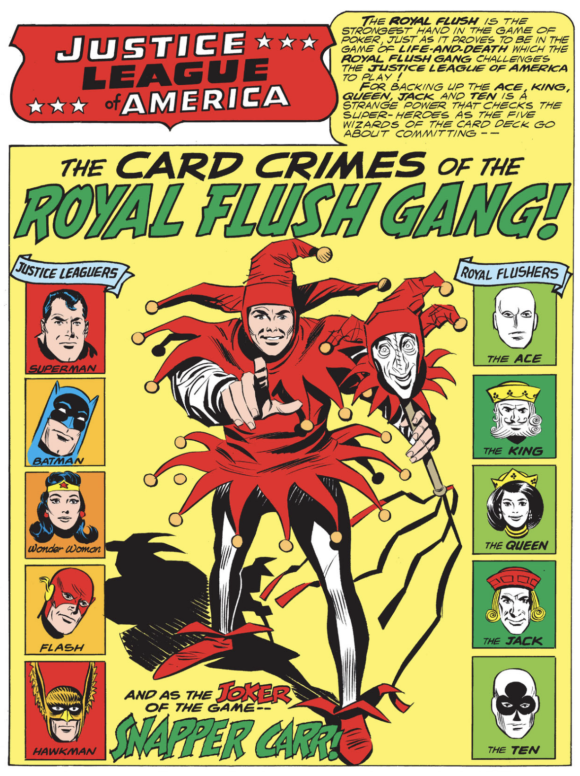
—
Page 3. The story opens in Midway City on (the as-yet-unnamed) Jack flipping a playing card at the bank guards pursuing him, apres robbery, causing them to be overcome by sorrow (“>Sob!< I feel so weepy—and sad–!”) before Hawkman and Hawkgirl show up, only to be zapped by Jack’s “Seven of spades—the card that foretells a—disagreement!” And wouldn’t you know it, the card compels them to bicker and disagree over how Jack should be captured, during which the bad guy escapes.
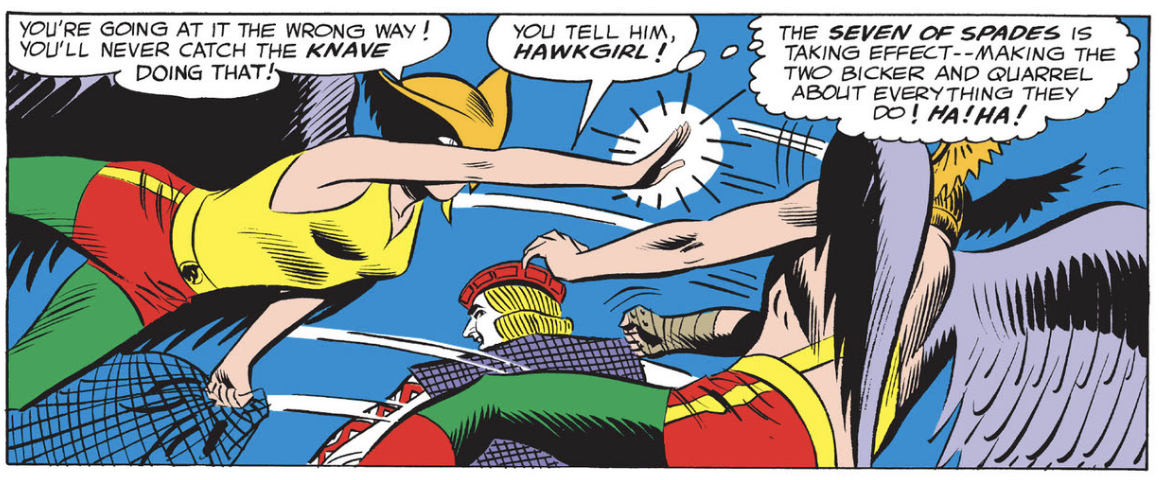
—
Page 5. Next stop on the standard JLA story formula (members are defeated in individual encounters with the menace du jour before joining up to take them on together): A Central City art museum robbery by King, interrupted by the Flash, who is then dealt “These five diamonds (which) mean unexpected news—in your case bad news!” Quite! Flash’s vision goes all screwy (Thummp! Clunk!), Sekowsky does Picasso, and on to Wonder Woman!
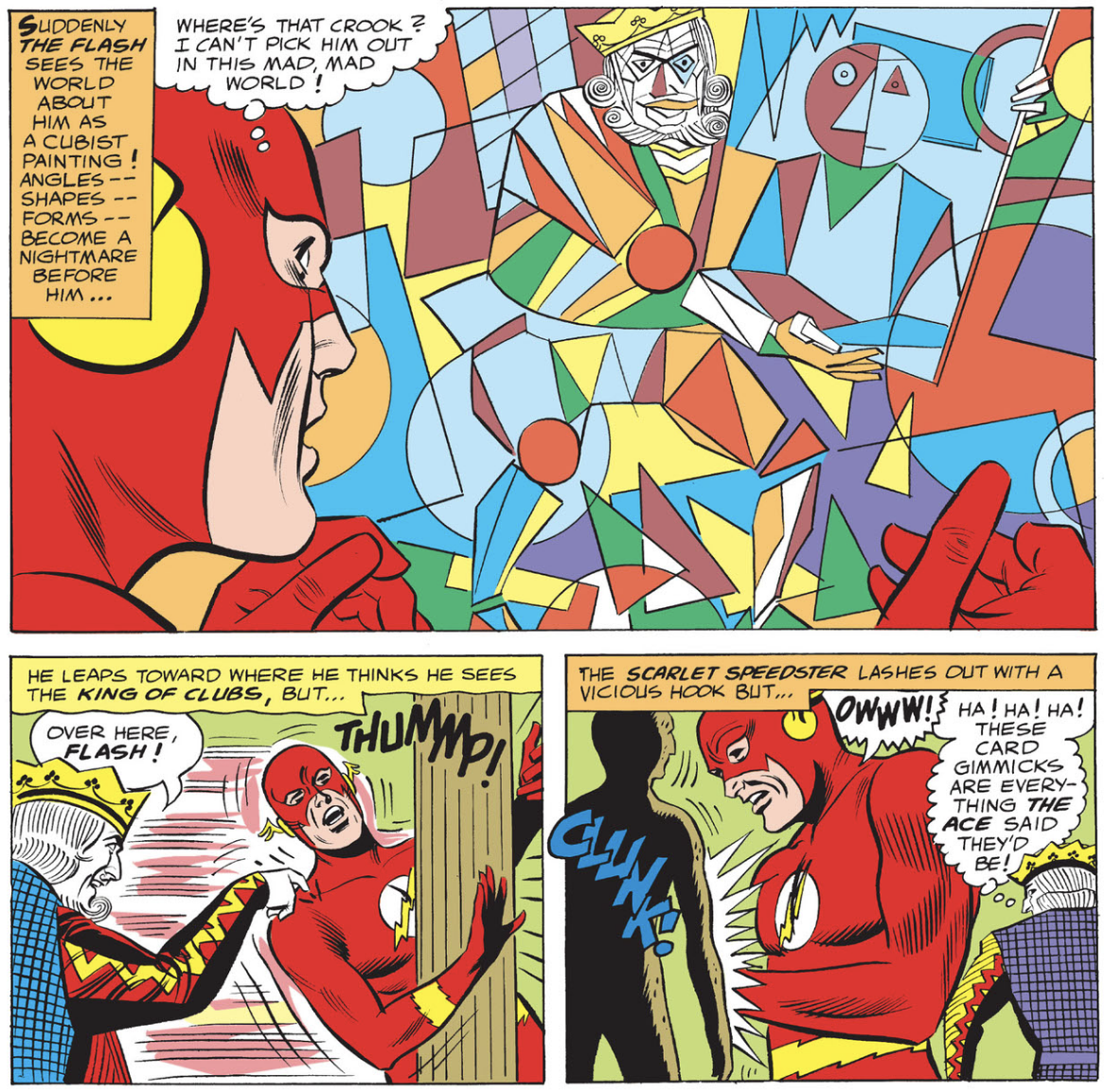
—
Page 6. At a fashion show, where the Club Queen swipes the bejeweled cape Wonder Woman is modeling, negating the Amazon Princess with the “Two of spades! In fortune-telling argot—it means a removal or loss!” As in the loss of Wonder Woman’s powers (and allowing for a very Schwartzian pun, “The deuce you say!” as the hero is overwhelmed by the giant card. Club Queen then deals a “travel card—the nine of diamonds” that compels Diana “to summon the Justice League to an emergency meeting!”
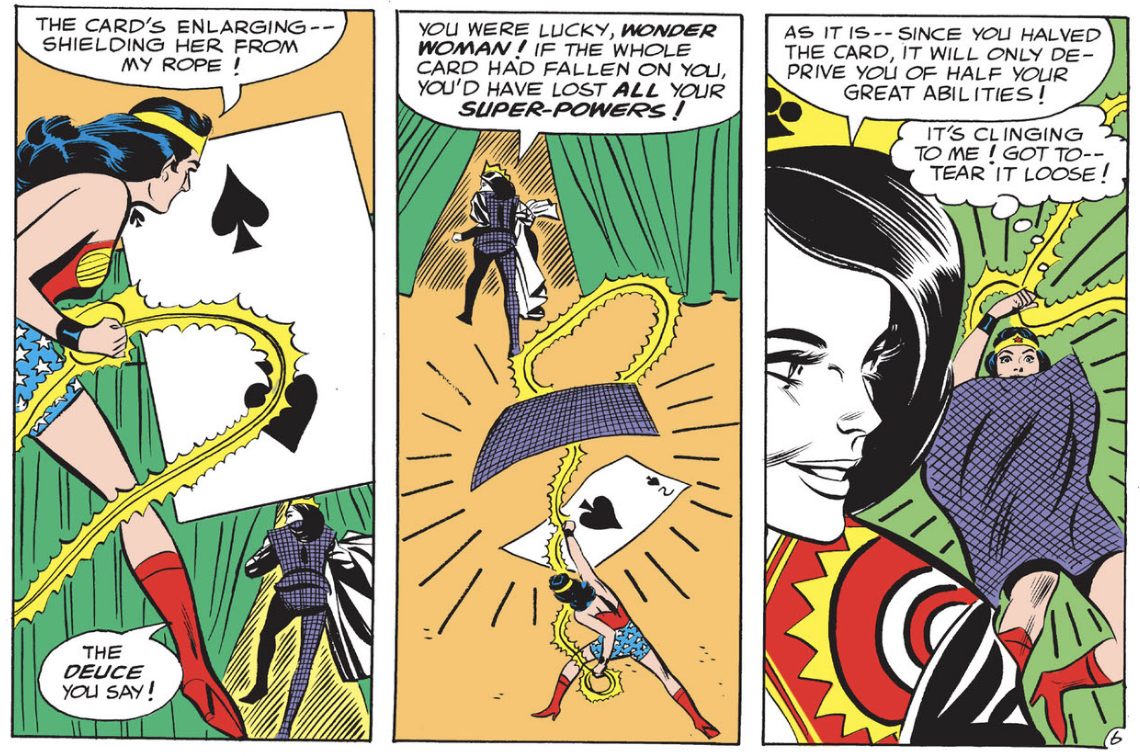
—
Page 8. At the emergency meeting in the JLA Secret Sanctuary, the three carded heroes are joined by Superman, Batman and Snapper Carr. Hawkgirl is nowhere to be seen but Hawkman is still being a bitch, arguing with everyone, while Batman is all offended “they didn’t even think enough of Batman to try and stop him! Man, that hurts!”
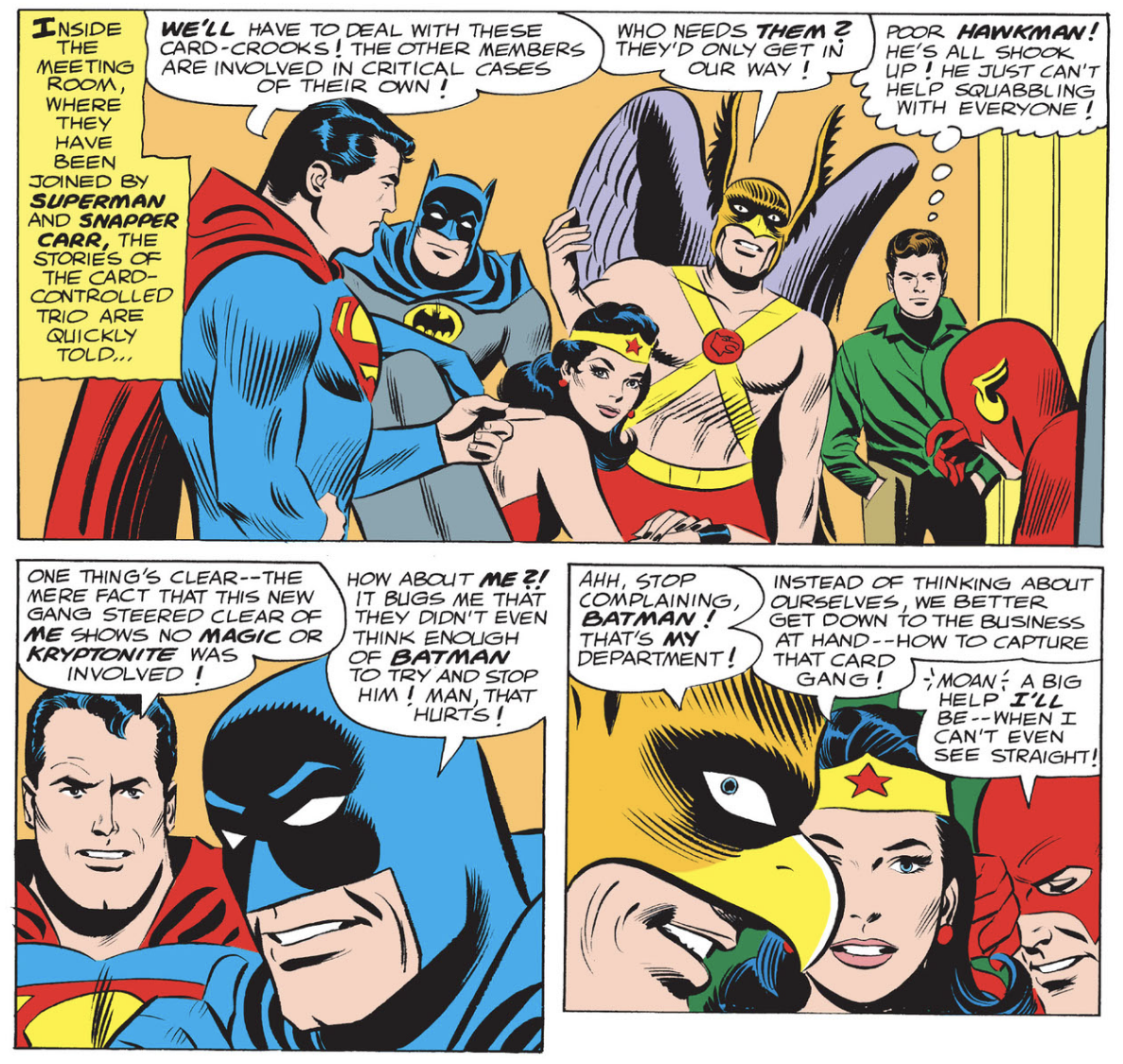
—
Page 9. Meanwhile, over at wherever it is a gang dressed like playing cards congregates (the Shoe? Little blackjack humor there!), we meet the rest of the gang, King of Clubs, Ten Spot and The Ace, “mastermind of the group” as they’re plotting the “utter defeat and annihilation” of the Justice League. The Ace flashes back to the origin of the group, which began when, after having spent a lifetime studying “the laws and science of gambling,” he learned of a “strange force that influences cards and their luck!” Back at the Secret Sanctuary, the JLA picks up the challenge radioed them by the Gang and races off to stop their raid on the Plateau City Bank!

—
Page 12. Faster than you can say “plot contrivance,” Ace has isolated the “force” (it’s called “stellaration,” for those wishing to conduct further studies into the subject), reunited with his childhood street gang, and is now planning to destroy the members of the JLA because… well, because isn’t that what supervillains do? Superman tries to hog all the glory (being neither Kryptonite nor magic he reasons, “Those tricks cards won’t affect me!”), but in the end they go as a team.
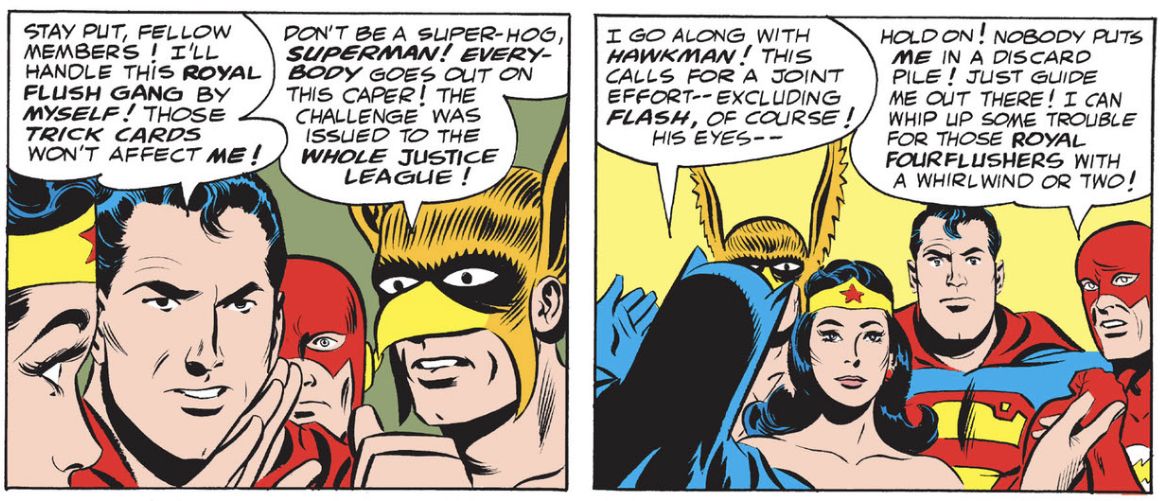
—
Page 16. Oh, things start out OK for the heroes, but the Royal Flushers quickly turn the tables, and not just with some clever playing card puns like, “We’re playing dealer’s choice, Batman!” Ace plays the four of diamonds, the card of betrayal, against the Caped Crusader, who then proceeds to take out Superman, Flash and Hawkman before Superman clops him a good one. With the heroes down, the RFG bids a gloating farewell, Ace exclaiming, “I have won! I have gained my long sought-for revenge over the Justice League! They can never threaten me again!” Then leaves them all alive so they can threaten him again.
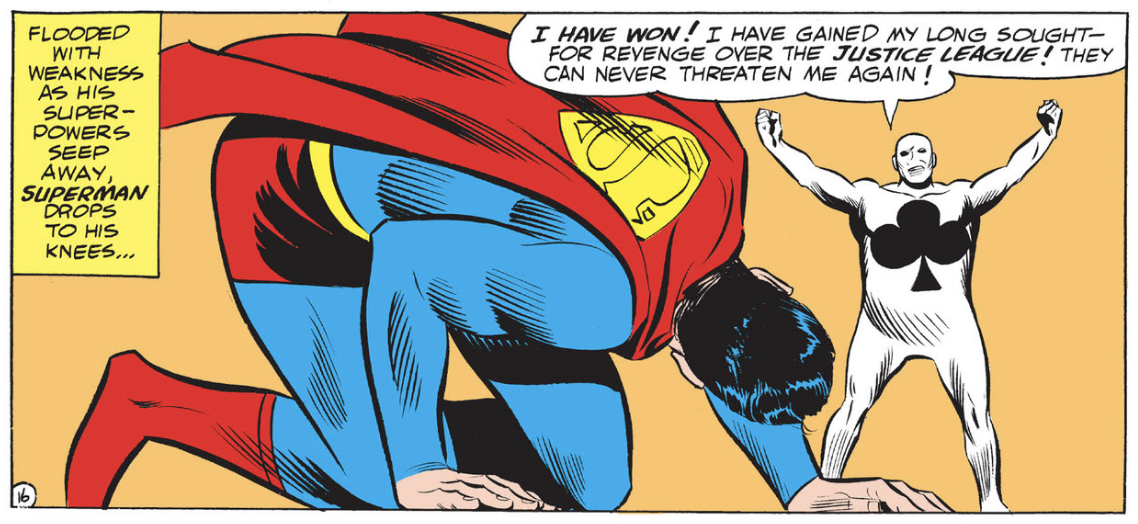
—
Page 17. Loo! Sers!
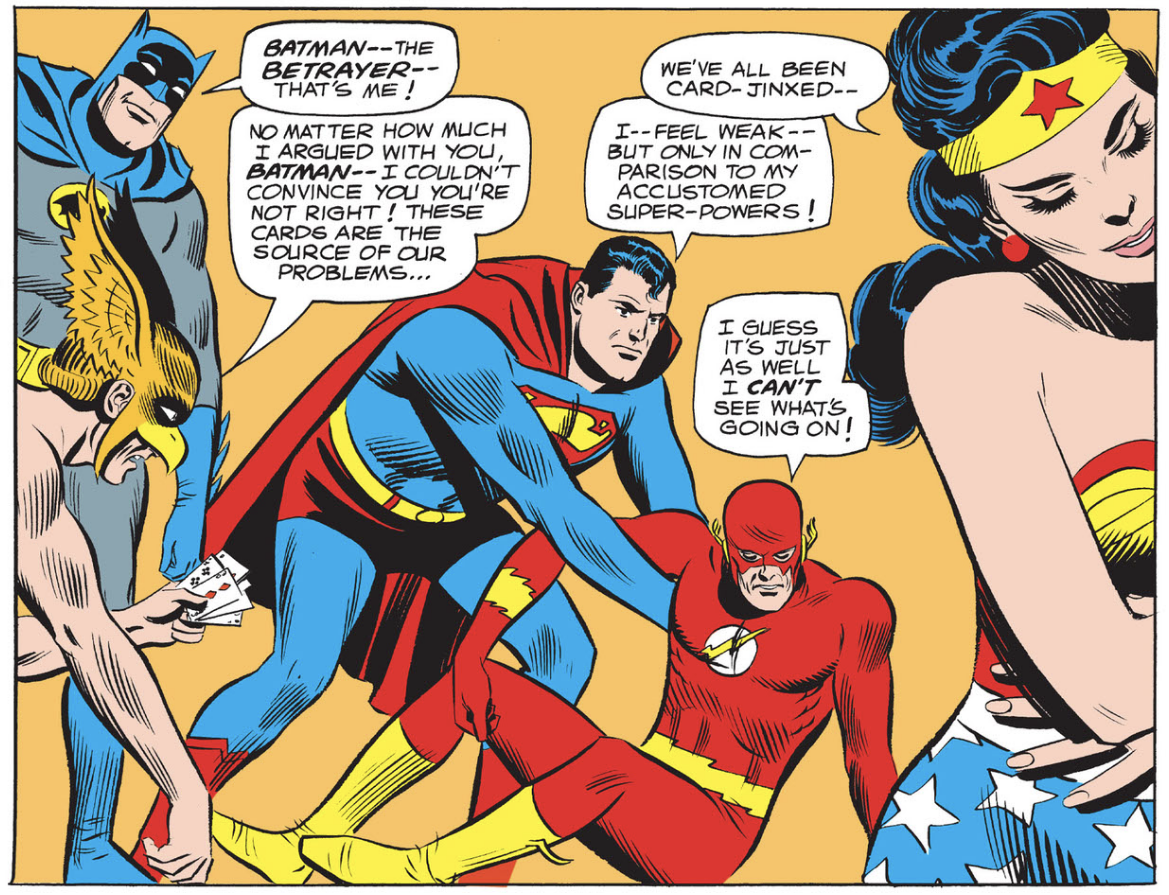
—
Page 19. The JLAers are all left marked by their exposure to the stellarated playing cards: Hawkman is argumentative. Batman is still in betrayal mode. Wonder Woman is ill. Superman in deep doubt. Flash half-blinded by Picassovision. Who is there to save them? Have you forgotten the splash page already? It’s Snapper Carr to the rescue, using a little mental judo on Hawkman to get around his card induced compulsive contrarianism and resort to one of those convenient 1960s deus ex machinas, the Thanagarian Absorbascon* (*“Editor’s note: A super-scientific device that extracts all knowledge from intelligent minds and feeds it to its users.”) for how to duplicate and neutralize stellaration. Job done (“an hour later”), Hawkman zaps Snapper with the energy, Snapper neutralizes it, and his friends are back to normal and ready to roll!
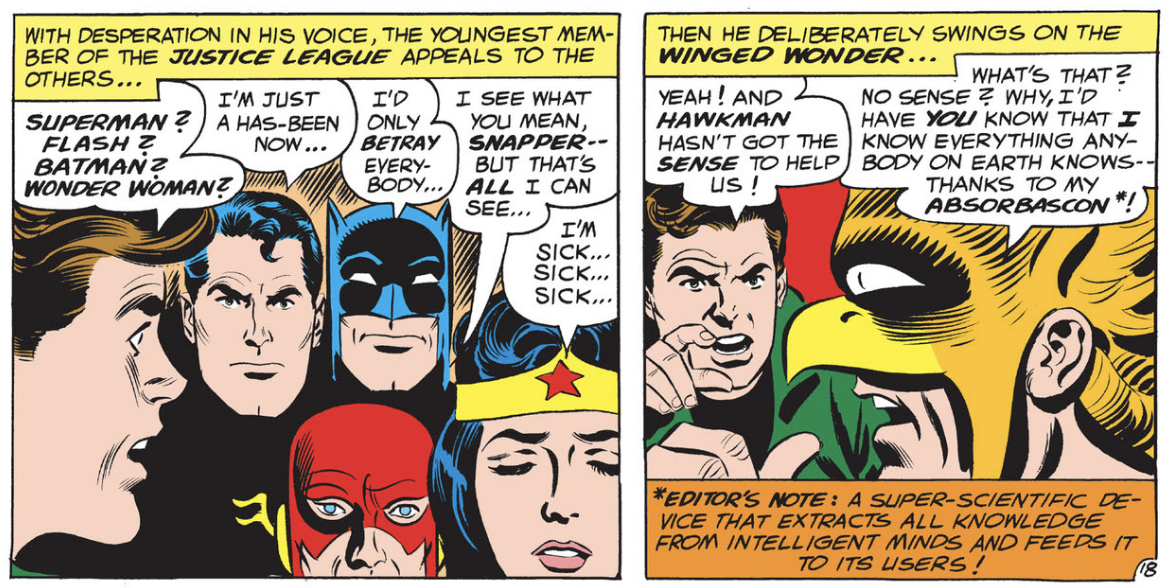
—
Page 21. With mere pages to go, the promise of the splash page is realized. Snapper races off into battle with the JLA as “the Joker,” their stellaration ace-in-the-hole, wearing what appears to be a rejected Merryman costume from the Inferior 5. They meet, they fight, the RFG unleashes a few boobytraps, including a knockout gas that contains Kryptonite (apparently the second most common element in the DCU after coincidence), but Snapper’s “Joker” is able to neutralize their powers and the gang is captured and unmasked!
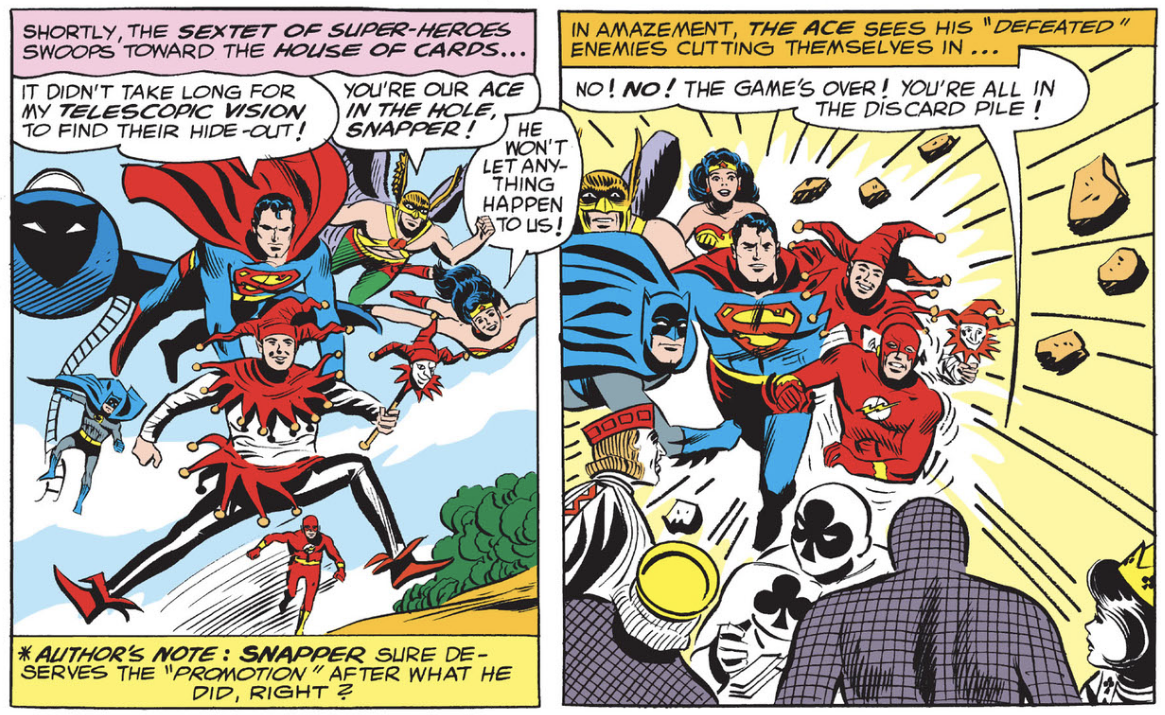
—
Page 24. And by gosh and by golly, there’s been so much breakneck action, we never stopped to think, “Who is the mysterious Ace and why does he hate the JLA so?” The answer is (and SPOILER ALERT for anyone who hasn’t had the chance to read it over the last 55 years!)… it’s Professor Amos Fortune, “the man we’ve defeated twice before!” (JLA #6 and JLA #14) Amos grumbles, “My stellaration gimmick worked no better than my stimoluck, which deactivated your luck glands—or my de-memorizer!” “That makes it three strikes and out, professor!” Snapper taunts, pretty bold words for a guy in a belled jester’s hat.
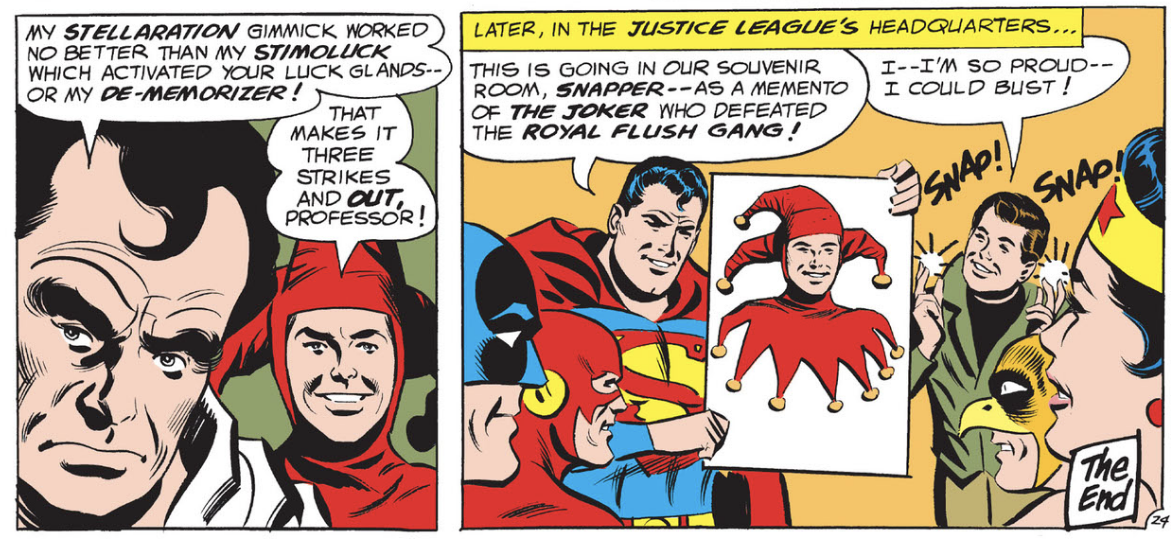
Snap! Snap!
—
MORE
— 13 COVERS: Ante Up for the ROYAL FLUSH GANG. Click here.
— PAUL KUPPERBERG: My 13 Favorite MIKE SEKOWSKY Comics. Click here.
—
Sure, you know PAUL KUPPERBERG as the prolific writer of over a thousand comic books for such characters and series as Superman, Aquaman, Doom Patrol, Vigilante, Life with Archie, Bart Simpson, Scooby-Doo, and dozens more for DC Comics, Archie Comics, Bongo Comics, and others, and that he is also the creator of the series Arion, Lord of Atlantis, Checkmate and Takion, and is a former editor for DC, Weekly World News, and WWE Kids Magazine. But Paul is also the author of numerous books, including the superhero novel JSA: Ragnarok and the comics industry-based murder mystery, The Same Old Story, not to mention (but we will anyway) Paul Kupperberg’s Illustrated Guide to Writing Comics, I Never Write for the Money, But I Always Turn in the Manuscript for a Check, Direct Comments: Comic Book Creators in their Own Words, The Unpublished Comic Book Scripts of Paul Kupperberg and Son of the Unpublished Comic Book Scripts of Paul Kupperberg. You can follow Paul at PaulKupperberg.com and at Crazy8Press.com.
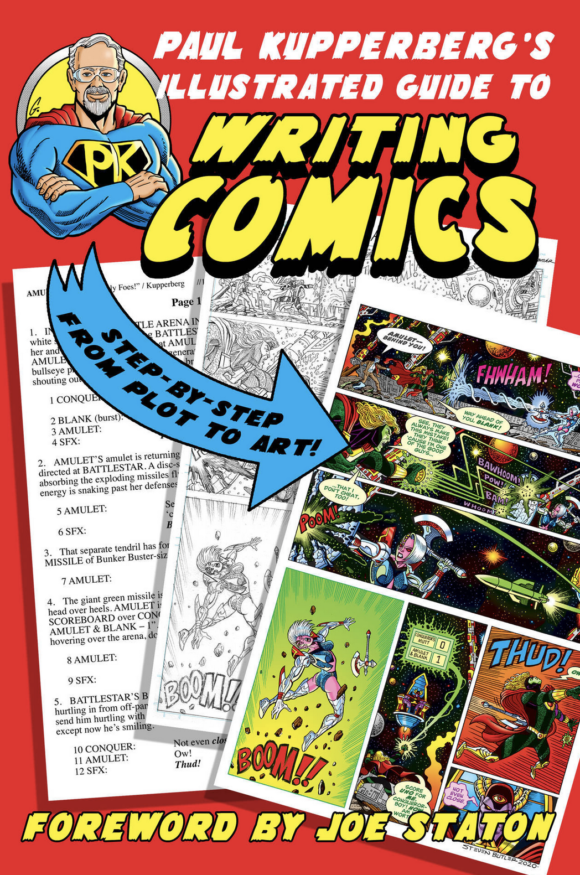

September 30, 2022
I’d also add the Body Positivity of Ace — it takes guts to walk around in a skintight leotard with that physique
September 30, 2022
Yes!
September 30, 2022
Love it! I first read the story reprinted in a 100 Page Spectacular when I was about twelve! My family and I played cards back then (never for money!) and I would remember the story every now and then while playing (Even if it was Canasta!) Great fun! Oh, and this might have been my first encounter with Amos Fortune! Thanks for the shuffle down memory lane!
October 2, 2022
LUCK GLANDS
October 2, 2022
Snapper. Oof.
September 12, 2025
I find it very ironic that Snapper was dressed as a joker in this issue considering who he would betray the League to years later…
September 12, 2025
Exactly! I do think we dodged a bullet in that DC didn’t let Snapper keep the outfit and powers and be more active with the JLA.
I think I was about 10 when I first read this story, the perfect age. I loved the RFG then, and still do, and they’ve been through a few versions – I mean, is there a better-designed villain themed team? They even have playing card backs.
That image of Diana on the page 27 panel – sick she may be, but has she ever looked more sultry?
September 12, 2025
I can’t get past ‘stellaration force because I can only think it has the ability to make people re-enact that scene in A Streetcar Named Desire with Marlon Brando’s iconic ‘Stellllla’! scene